
© John McDermott. (Click image for larger version)
From the show flyer… “Rotunda features the beautiful collision of a live brass band with the raw power of contemporary dance, timed to honour the Gallipoli landings in 1915…”
New Zealand Dance Company and the City of Holroyd Brass Band
Rotunda
Sydney, Riverside Theatres, Parramatta
15 May 2015
www.nzdc.org.nz
riversideparramatta.com.au
On entering the auditorium for the New Zealand Dance Company’s show, Rotunda, our eyes are instantly drawn to the fact that the curtain has already gone up. A long, narrow piece of silk, lit red, hangs from above and on it is a list of names. The names are spaced out a bit, rather erratically it seems, but as we sit and wait for the lights to dim more names appear until the whole piece of silk is filled with an alphabetically arranged list. Some family names are repeated with a different first initial. It is an honour roll.
When the lights dim the silk falls to the ground, the red colour disappears and we are left with a piece of golden material that starts to float, curl, and twist in the air. Looking hard we can see that the movement of the silk is the result of a circle of fans positioned on the stage. A man in an army greatcoat enters, follows the silk with his eyes, and occasionally touches and holds it. This is the amazing beginning to a work about war made by artistic director Shona McCullagh for the eight dancers, four men and four women, of the New Zealand Dance Company. It is an amazing opening because the movement of the silk seems filled with an emotive power; it arouses our curiosity and because it is only at the end that we realise what that piece of silk signifies.
Rotunda then becomes a kind of flashback. The lights in the auditorium go up and from the doors through which we have entered a brass band, selected locally for each city in which Rotunda is performed, makes its entrance. The band, led by a vibrant conductor, New Zealander Marc Taddei, marches down the aisles and onto the stage.
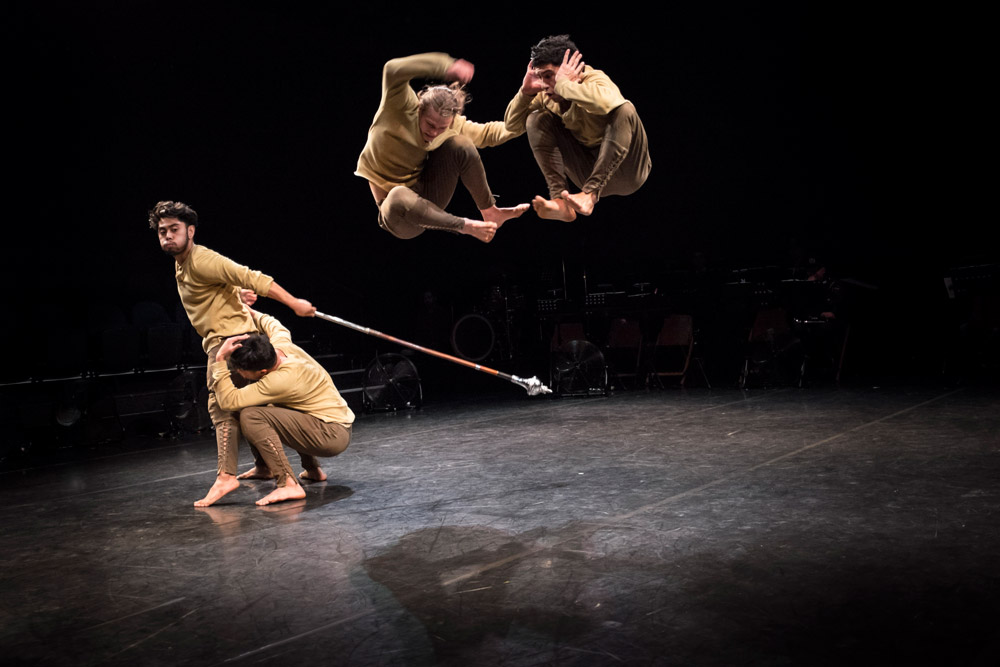
© John McDermott. (Click image for larger version)
The episodes that follow are mixed as far as the emotions the dancers of the company convey. The earlier sections reveal the youth of the men who will eventually join the war. They engage with each other in a sleight of hand game with the conductor’s ceremonial mace. They pass, toss and throw it to each other. They catch, dive for, stretch out for it. It often goes in an unexpected direction, or to an unexpected recipient. The dancers leap and turn with speed and strength. Then the men and women dance together and the world looks rosy. But, when the four men perform a kind of Maori haka, we get an inkling of what might happen as time passes. The women grieve as the men leave for war.
As the central section of the work begins, sheets of silk drop down forming a kind of front curtain. This time they are white and we see images of war projected on them. We see a glimpse, too, of what is happening behind the silks. The men are fighting, shouting, engaged in war. Their shadows are projected onto the silks, sometimes hugely and dramatically magnified. But as the silks drop away and are picked up and carefully carried off, two heart-wrenching duets follow. In one a soldier cannot believe that his mate is dead. ‘Wake up!’ he shouts as he cradles him, tries to sit him up and confronts his lifeless body. Then we see a woman attempting to deal with her unresponsive man who has returned home. Traumatised by his experiences, there is no reaction at all as the woman cajoles him and tries to engage him. He holds his body stiffly, almost lifelessly. His eyes never look at her.
Later we feel there is a sense of hope for peace in the future, and a Maori song, E pari ra, is sung unaccompanied. It is a lament for fallen soldiers and by the end of the show the golden silk of the beginning is back and it circles the stage, billowing as it did before. As the dancers follow its movement we realise that it must surely be the spirit of those who died in war.
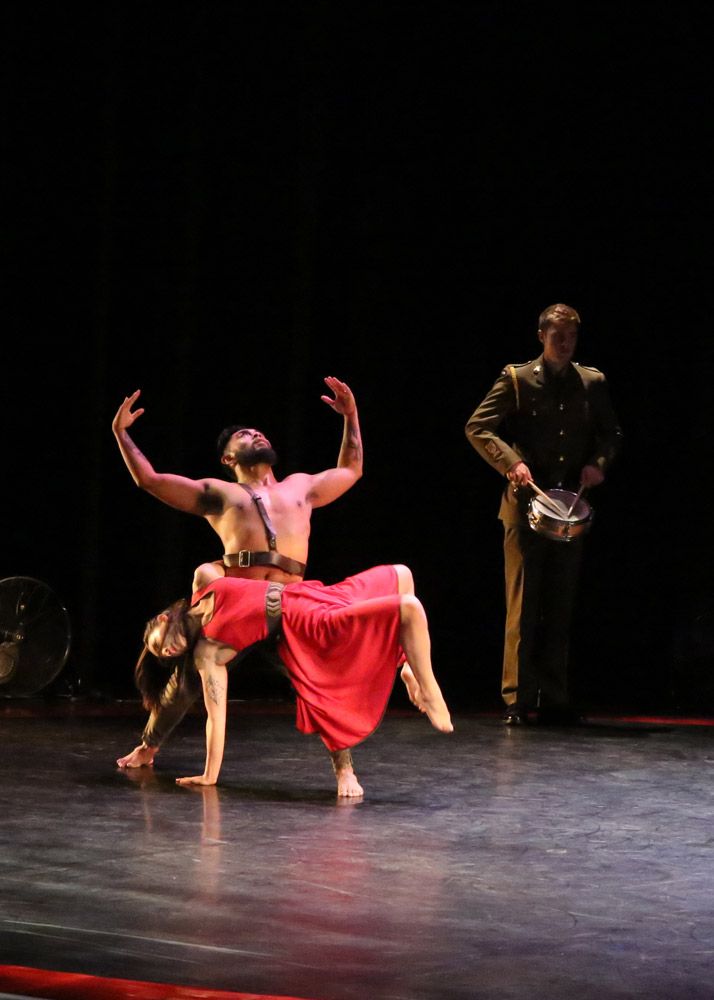
© Caroline Bindon. (Click image for larger version)
The score for Rotunda, mostly played by the brass band who remained onstage sitting in a semi-circle at the back, consisted of music by contemporary New Zealand composers with the addition of some hymns, including a more than moving (tears welled up) rendition of William Blake’s Jerusalem. Occasionally there was no musical accompaniment, just the sound of dancers muttering, breathing, and at times calling out to each other. Occasionally, too, a single drummer, Cameron Lee from the New Zealand Army Band, provided a poignant accompaniment.
With Rotunda Shona McCullagh has made a truly thrilling work and the influence of a dramaturg, Michelanne Forster, was very clear in the production. The whole was just masterfully conceived. Without any strong or obvious narrative line, everything was left to us to experience and everything was absolutely clear. Even the choice of name was inspired. While we never see a rotunda we know that from the rotunda brass bands played as men marched off to war. But there is more than that simple allusion. In the piece there is a circularity in the way the work, in its end, returns to its beginnings.
As we in Australia recover from the hype surrounding the centenary of the Gallipoli landing (and I for one am over the perception, perpetuated at the highest political level in Australia, that the Gallipoli disaster is an Australian ’foundation myth’), from New Zealand has emerged the best possible tribute—a powerful piece of dance. Brave, beautiful and, above all, honest.






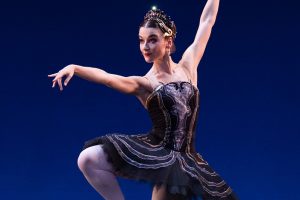
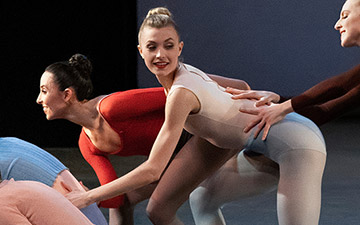
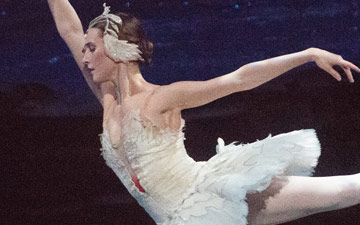
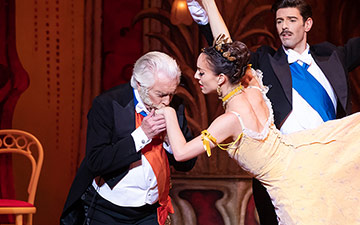
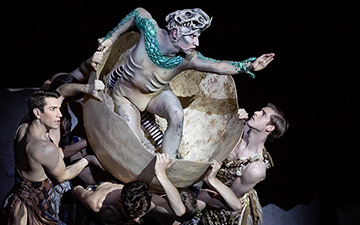

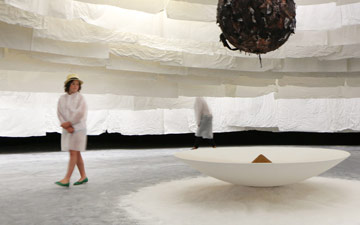
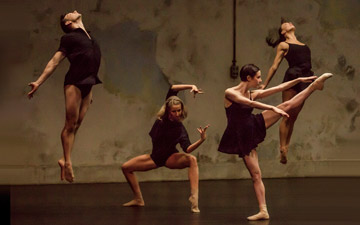

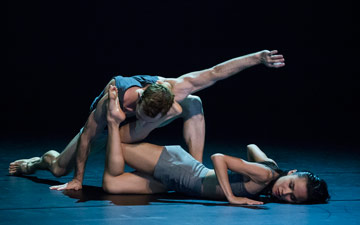

You must be logged in to post a comment.